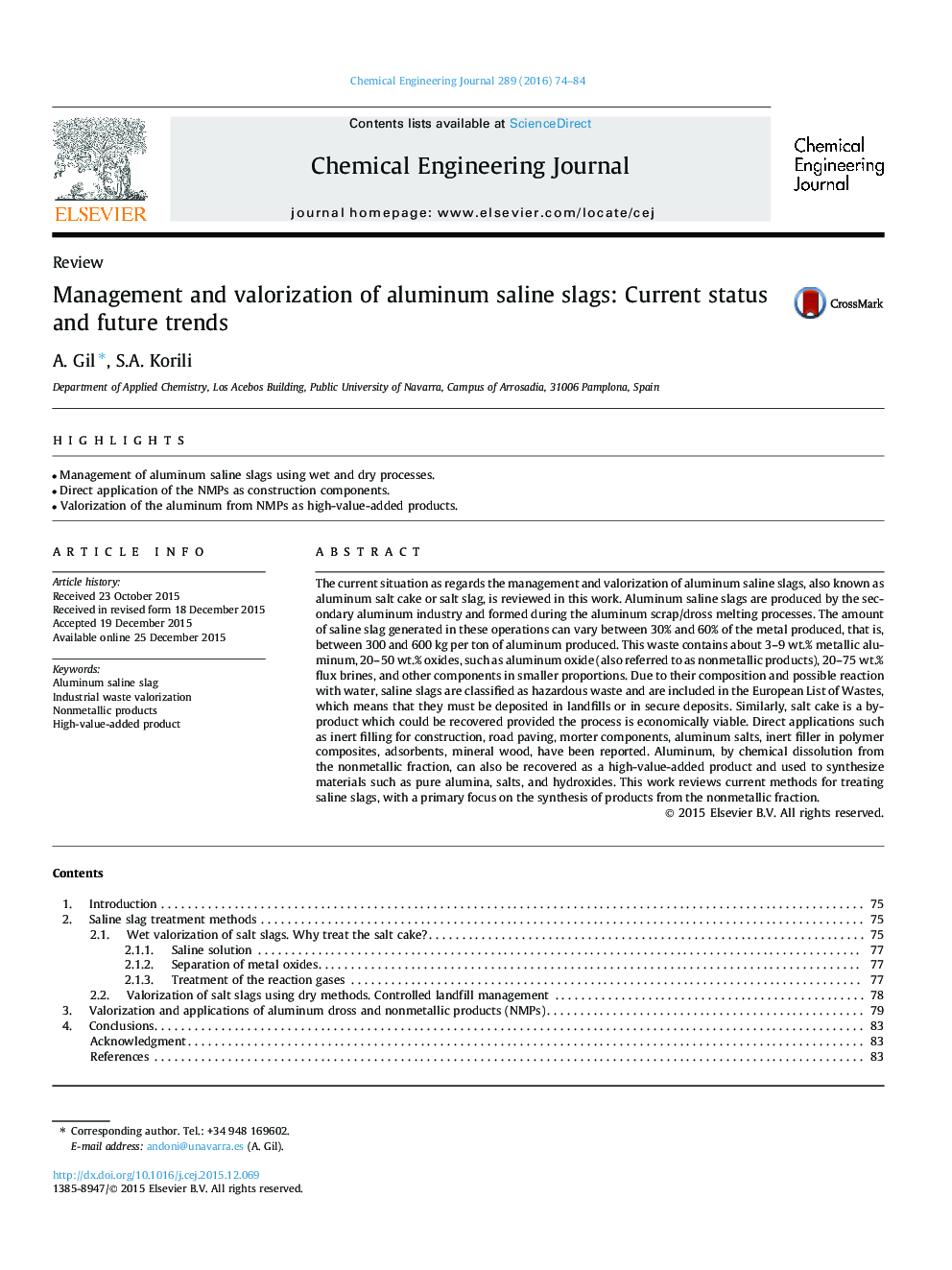| Article ID | Journal | Published Year | Pages | File Type |
|---|---|---|---|---|
| 145801 | Chemical Engineering Journal | 2016 | 11 Pages |
•Management of aluminum saline slags using wet and dry processes.•Direct application of the NMPs as construction components.•Valorization of the aluminum from NMPs as high-value-added products.
The current situation as regards the management and valorization of aluminum saline slags, also known as aluminum salt cake or salt slag, is reviewed in this work. Aluminum saline slags are produced by the secondary aluminum industry and formed during the aluminum scrap/dross melting processes. The amount of saline slag generated in these operations can vary between 30% and 60% of the metal produced, that is, between 300 and 600 kg per ton of aluminum produced. This waste contains about 3–9 wt.% metallic aluminum, 20–50 wt.% oxides, such as aluminum oxide (also referred to as nonmetallic products), 20–75 wt.% flux brines, and other components in smaller proportions. Due to their composition and possible reaction with water, saline slags are classified as hazardous waste and are included in the European List of Wastes, which means that they must be deposited in landfills or in secure deposits. Similarly, salt cake is a by-product which could be recovered provided the process is economically viable. Direct applications such as inert filling for construction, road paving, morter components, aluminum salts, inert filler in polymer composites, adsorbents, mineral wood, have been reported. Aluminum, by chemical dissolution from the nonmetallic fraction, can also be recovered as a high-value-added product and used to synthesize materials such as pure alumina, salts, and hydroxides. This work reviews current methods for treating saline slags, with a primary focus on the synthesis of products from the nonmetallic fraction.
